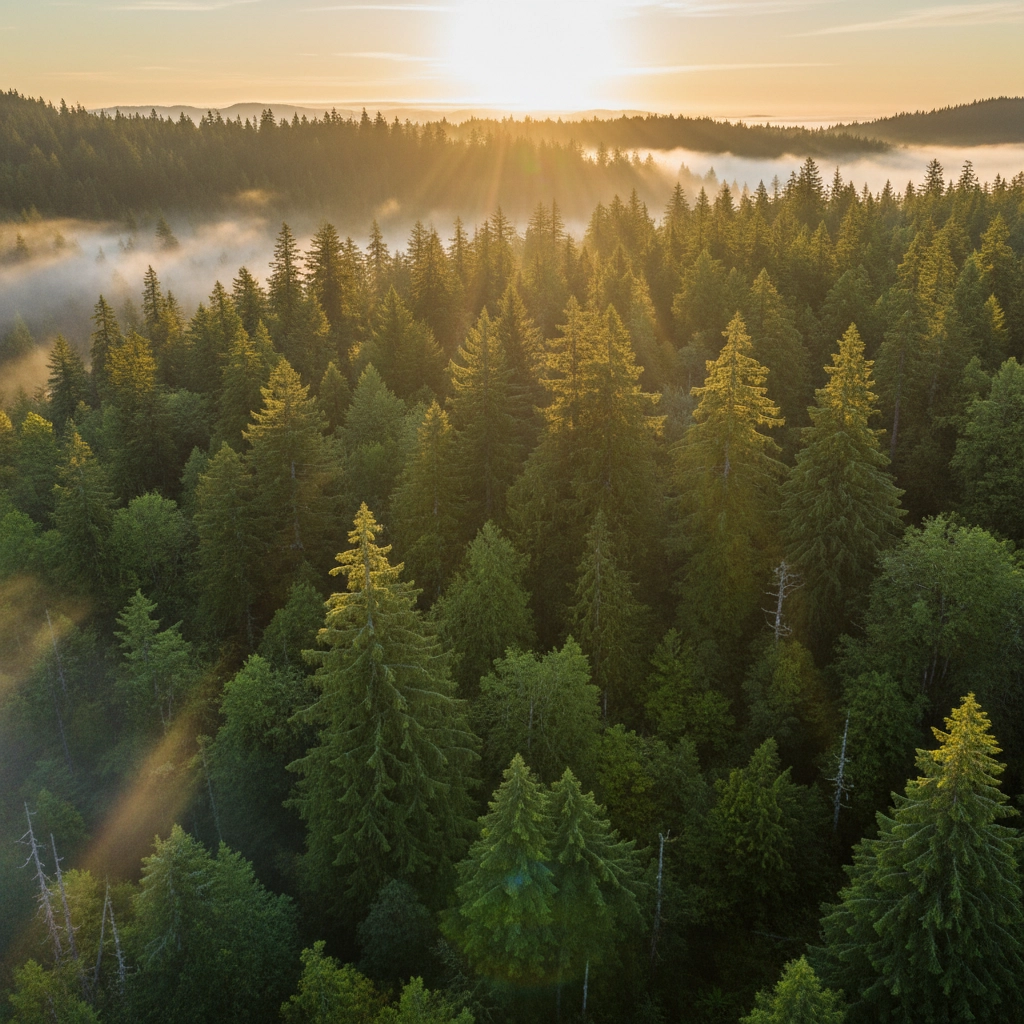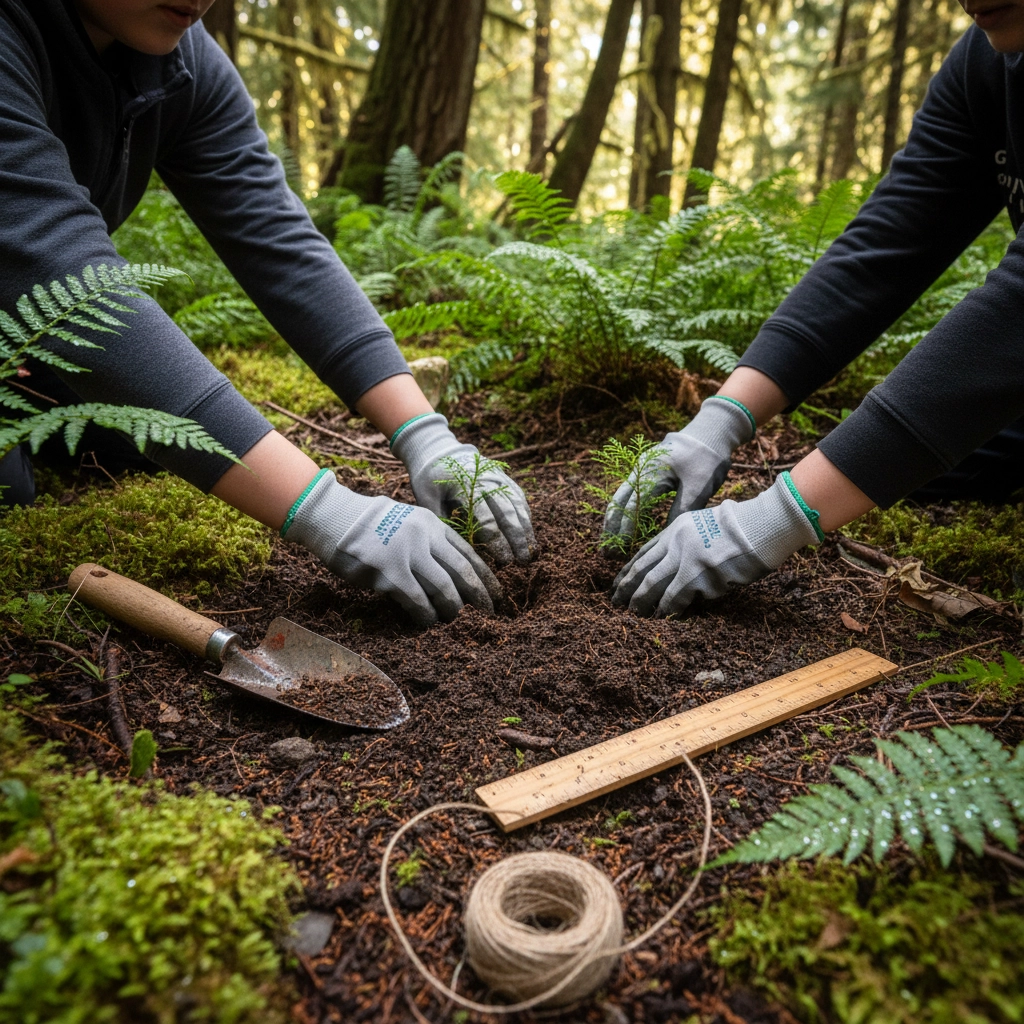Wildlife Ecology of the Pacific Northwest Rainforests: What Students Can Learn on Expedition
- Caleb Mullenix
- Oct 21
- 5 min read
Preparing your students for an expedition into the Pacific Northwest's temperate rainforests involves understanding one of Earth's most complex and biodiverse ecosystems. The region encompassing Mount Rainier, Olympic National Forest, and conservation sites like Farmers Frog offers unparalleled opportunities for students to engage with authentic scientific research while developing critical thinking skills about ecology, earth science, and conservation biology.
Understanding the Pacific Northwest's Unique Ecosystem Framework
Begin by establishing the foundational context that makes Pacific Northwest rainforests exceptional learning environments. These temperate rainforests represent the largest temperate rainforest region globally, supporting biomass levels four times greater than comparable tropical ecosystems. Students will encounter an ecosystem where forest and ocean interconnect through complex relationships, creating specialized niches and adaptive pressures unlike anywhere else on Earth.
Ensure that students understand the climate conditions that create these rainforests before departure. The region receives 150-300 inches of annual precipitation, creating the moisture-rich environment essential for supporting diverse plant and animal communities. This precipitation pattern, combined with moderate temperatures year-round, enables the massive accumulation of living and decaying organic matter that characterizes these forests.

Wildlife Diversity and Ecological Relationships
Prepare students to observe and document the remarkable array of wildlife species adapted to Pacific Northwest rainforest conditions. The ecosystem supports large mammals including black bears, Roosevelt elk, black-tailed deer, mountain lions, and coyotes. Students will learn to identify signs of these animals and understand their ecological roles within the forest community.
Direct attention to the interconnected nature of forest and marine ecosystems through salmon observation opportunities. These anadromous fish demonstrate the complex relationships between terrestrial and aquatic environments, spawning in forest streams while spending much of their lives in the ocean. Students can observe how salmon runs support not only aquatic food webs but also terrestrial wildlife, including bears, eagles, and numerous smaller species.
Emphasize the importance of documenting smaller wildlife species during field observations. The forests harbor banana slugs, various rodent species, shrews, and extensive invertebrate communities that serve critical roles in nutrient cycling and ecosystem functioning. Students should maintain detailed field journals documenting these observations and their ecological significance.
Earth Science and Volcanic Processes at Mount Rainier
Establish clear learning objectives for earth science components of Pacific Northwest expeditions, particularly at Mount Rainier. Students will examine volcanic processes, glacial activity, and geological formations that have shaped the region's landscape over millions of years. Mount Rainier serves as an active stratovolcano, providing opportunities to study volcanic hazards, monitoring systems, and emergency preparedness protocols.
Create structured activities for students to examine glacial processes and their ecological impacts. Mount Rainier supports 25 named glaciers, offering direct observation opportunities of glacial retreat, moraines, and the ecological succession occurring as glaciers recede. Students can collect data on vegetation patterns at different elevations and distances from glacial termini.
Advise students to observe and document how volcanic and glacial processes create diverse microhabitats within the ecosystem. Different soil types, drainage patterns, and elevation gradients support distinct plant and animal communities, demonstrating how geological processes directly influence biological diversity.

Alpine Forest Ecology and Adaptation Studies
Design learning experiences that highlight adaptation strategies of alpine forest species. Students will observe how trees, shrubs, and herbaceous plants adapt to harsh mountain conditions including temperature extremes, high winds, and short growing seasons. Mountain hemlock, subalpine fir, and whitebark pine demonstrate specific adaptations including modified growth forms, specialized root systems, and timing of reproductive cycles.
Encourage students to document wildlife adaptations to alpine conditions. Species like pikas, marmots, and mountain goats exhibit behavioral and physiological adaptations to high-elevation environments. Students can observe how these animals modify their activity patterns, food storage behaviors, and habitat selection in response to seasonal changes.
Emphasize the fragility of alpine ecosystems and the extended recovery time required following disturbances. Students should understand how climate change impacts are particularly pronounced in alpine environments, making these ecosystems valuable for studying environmental change impacts.
Conservation Projects and Hands-On Research at Farmers Frog
Integrate authentic conservation research experiences through partnerships with organizations like Farmers Frog. Students participate in habitat restoration projects, native plant propagation, and wildlife monitoring programs that contribute to ongoing conservation efforts. These experiences demonstrate how scientific research translates into practical conservation applications.
Structure activities that allow students to collect and analyze real scientific data. Students may participate in amphibian surveys, water quality monitoring, invasive species removal, or native seed collection programs. Ensure that students understand how their contributions support larger research initiatives and conservation goals.
Create opportunities for students to interact with conservation professionals and researchers. Guest speakers can explain career pathways in conservation biology, ecological restoration, and environmental monitoring while demonstrating how scientific training applies to real-world conservation challenges.

Food Web Dynamics and Ecosystem Functioning
Develop comprehensive understanding of Pacific Northwest rainforest food webs through direct observation and data collection. Students will identify producers, primary consumers, secondary consumers, and decomposers while documenting the complex relationships between these trophic levels. The exceptional productivity of these forests creates opportunities to observe multiple feeding relationships and energy transfer pathways.
Advise students to pay particular attention to decomposer communities and nutrient cycling processes. The massive accumulation of organic matter in Pacific Northwest forests depends on diverse communities of fungi, bacteria, and invertebrates that break down dead plant and animal material. Students can examine how fallen logs serve as nurseries for new tree growth, demonstrating the critical role of decomposition in forest regeneration.
Encourage documentation of specialized ecological relationships including mutualism, commensalism, and parasitism. Students may observe mycorrhizal associations between fungi and plant roots, seed dispersal relationships between birds and fruiting plants, or predator-prey dynamics between various species pairs.
Research Methods and Scientific Documentation
Establish clear protocols for scientific observation and data collection during expeditions. Students should maintain detailed field notebooks with standardized data collection formats, weather observations, GPS coordinates, and photographic documentation of significant observations. This systematic approach teaches students proper scientific methodology while creating valuable records for post-expedition analysis.
Create opportunities for students to use scientific equipment including pH meters, dissolved oxygen meters, binoculars, magnifying glasses, and digital cameras with macro capabilities. Proper use of scientific instruments enhances observation quality while teaching students how professional researchers collect environmental data.
Design collaborative research projects that require students to synthesize observations from multiple expedition sites. Students can compare wildlife diversity between old-growth and second-growth forest areas, examine elevation gradients and species composition changes, or analyze water quality parameters across different watersheds.

Safety Protocols and Risk Management
Ensure comprehensive safety preparation for Pacific Northwest expeditions, emphasizing weather preparedness, wildlife safety, and terrain challenges. Students must understand proper layering systems for variable weather conditions, hypothermia prevention, and appropriate footwear for wet, slippery conditions common in rainforest environments.
Discuss wildlife safety protocols extensively, particularly regarding black bear encounters. Students should understand proper food storage procedures, appropriate responses to bear sightings, and group travel requirements in bear habitat. Emphasize that wildlife observation should always occur from safe distances using binoculars or telephoto lenses.
Establish clear communication protocols and emergency procedures for mountainous terrain. Students should understand how weather conditions can change rapidly at elevation, creating hazardous conditions including lightning, sudden temperature drops, and reduced visibility. Emergency shelter procedures and evacuation routes must be thoroughly explained and practiced.
Post-Expedition Learning Integration
Design comprehensive follow-up activities that reinforce and extend expedition learning experiences. Students should create scientific presentations, research reports, or multimedia projects that synthesize their field observations with broader ecological concepts and conservation principles.
Encourage students to maintain long-term connections with conservation organizations encountered during expeditions. Many students develop lasting interests in environmental careers through these authentic research experiences, making post-expedition engagement opportunities valuable for career development.
Create opportunities for students to share their expedition experiences with peers, parents, and community members. Public presentations reinforce learning while demonstrating the educational value of expedition-based learning approaches to stakeholders and potential supporters of future programs.
The comprehensive educational opportunities available through Pacific Northwest rainforest expeditions provide students with authentic scientific experiences that foster deep understanding of ecological principles, earth science concepts, and conservation practices. Through careful preparation, structured observation protocols, and meaningful follow-up activities, these expeditions transform students into informed environmental stewards while building crucial scientific thinking skills that benefit them throughout their academic and professional careers.



Comments